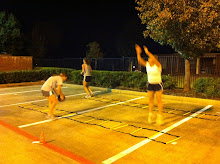MUSCLE IMBALANCES
By engaging in postural muscle strength activities, we look to improve posture. But typically, the exercises we choose are not focused on postural muscle strength. The most common muscle imbalances come from having a sedentary lifestyle in which sitting is dominant. When you are sitting, your muscles shorten. With prolonged sitting, your muscles become tight and cause a disturbance not only on the opposing muscle, but also with the entire musculoskeletal system.
Common Problems with Muscles Involved in Imbalances
- Weak Upper & Middle Back- Here we are dealing with weak trapezius muscles and the rhomboids. This could be due to lack of exercise or doing too many chest exercises. Each muscle has an opposing muscle or muscle that works opposite of it. If you are doing too many chest strengthening exercises, you will cause muscle imbalances. Our pec major is our traps and rhomboids antagonist.
- Tight Hip Flexors-Here we see the pelvis rotating anteriorly and this too is due, in large, to sitting for extensive periods. Tight hip flexors in turn do a lot of abdominal work, making your core exercises useless. What also occurs is weakening of the glutes as these are the hip flexors opposing muscle.
- Tight Hamstrings- Commonly, the hamstrings take over the normal functions of the glutes and hip flexors as the hamstring is the synergistic (helper) muscle to the hip flexors. Here we will be prone to injury. Sitting absolutely shortens the muscles, causing tightness. Any tightness in the hamstring makes gains in the gym near impossible.
What to do:
- Those who have their shoulders coming forward, should practice flexibility and retract their shoulders during exercise.
- Create balance by incorporating every muscle into your workout, with the same amount for each opposing muscle.
- Strengthen your core. With a strong core, you will maintain proper alignment.
- Strengthen your glutes. Your glutes are the largest muscle in the body. Since we all do a lot of sitting, we need to focus on strengthening our glutes to ensure they are dominating when need be.
- Better your flexibility. The best way to relieve tension is though stretching. A stretch is opposite of the function of the muscle.
Take Home Message:
Sit up keeping the head straight, not forward or to the side. Bring your shoulders back and relax them down. Sit with legs parallel (not turned out) and shoulder width apart. Keep your pelvis aligned by engaging your abdominals. Get up and stretch every hour if you are sitting for any longer than one hour. Every twenty minutes reach your arms straight, feeling lengthening of the spine. Strengthen your back and core muscles and make sure to maintain balance through all opposing muscles exercises.




















No comments:
Post a Comment